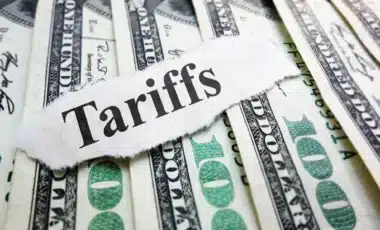Walmart recently reintroduced a $6.99 “basket fee” for small online grocery orders under $35 for participants in its Walmart+ Assist program, which serves low-income shoppers using SNAP, EBT, or Medicaid benefits. According to Mashable, some outlets suggested the fee was linked to tariffs imposed during the Trump administration, but Walmart has firmly denied this connection. The company clarified that the fee is a standard retail practice, not a response to tariff increases. This move has raised concerns, particularly since Walmart is a leading retailer for SNAP shoppers, with 94% purchasing groceries from the store in the past year.
What’s Behind Walmart’s $6.99 Charge for Small Orders?
Walmart reinstated the $6.99 fee for online orders under $35 for Walmart+ Assist members starting in April. This fee had been waived during the COVID-19 pandemic but returned as part of a broader adjustment to the retailer’s pricing policies. Walmart+ Assist is a program that provides low-income shoppers with a discounted version of Walmart+ — offering benefits like free pharmacy delivery and discounted gasoline purchases.
While some have speculated that the fee’s return is tied to the costs associated with tariffs on imports, Walmart has refuted these claims. A company spokesperson explained that the fee is a common practice among large retailers like Walmart and Target for small online grocery orders. Notably, the fee does not apply to in-store purchases, further suggesting that the charge is more about logistics and operational costs than external economic factors.
Walmart’s Role in Serving Low-Income Households
Walmart plays a crucial role in providing affordable groceries and everyday necessities to millions of Americans, particularly those relying on SNAP and Medicaid. With over 4,600 stores across the U.S., Walmart is by far the most popular grocery retailer among food stamp recipients. According to data from Numerator, an impressive 94% of SNAP shoppers have made purchases at Walmart in the past year.
This widespread reliance on Walmart for grocery needs makes the reintroduction of the $6.99 fee a sensitive issue for many of its low-income customers. For these shoppers, even a modest fee can be a significant barrier to access affordable food. Walmart’s decision to reinstate this charge could affect its image as a retailer for the economically disadvantaged, especially if public perception ties the fee to broader economic factors like tariffs.
The Tariff Debate: Is Walmart Passing Costs to Shoppers?
The claim that Walmart’s $6.99 fee is a direct result of tariffs imposed by the Trump administration has been widely circulated, especially in reports by The Daily Mail. These reports suggest that new tariffs on imported goods, particularly food products, are causing Walmart to pass the costs onto its customers.
However, Walmart has made it clear that tariffs are not responsible for the reinstated fee. The company has a history of managing price fluctuations without passing the costs directly onto consumers. Additionally, Walmart’s massive scale and global supply chain give it an advantage in absorbing price increases compared to smaller retailers.
It’s also worth noting that Walmart has been actively working to bring more American-made products to its shelves through its “Grow With Us” initiative. This could help the company reduce its exposure to global tariffs and strengthen its position in the U.S. market, particularly for essential products.
Walmart’s Ability to Absorb Tariff Costs
Despite the speculation, Walmart is better positioned than many smaller businesses to absorb the costs associated with global tariffs. With its vast supply chain and deep pockets, Walmart can spread these costs across its extensive network of stores and suppliers. In fact, during a February earnings call, Walmart CEO Doug McMillon reassured investors that the company could weather the storm of rising tariffs without significantly impacting consumer prices.
While U.S. households continue to consume a significant amount of produce and dry goods imported from abroad, Walmart has the resources to adjust its pricing structure to minimize the impact on its shoppers. This ability to absorb cost increases is a key advantage for Walmart, allowing it to remain competitive in the highly price-sensitive grocery sector.









